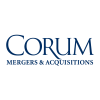Thematic Private Equity Investing
Bruce Milne
We now have a preview of a topic were going to dig into in more detail next month, when we take an in-depth look at the investor community.
Brad Feld
Im Brad Feld, Im one of the four partners at Foundry Group, a venture capital firm in Boulder, Colorado that invests in early stage software and internet companies. Today Id like to talk to you about how we think about our investment themes. Weve defined a thematic framework for investing. This is different than the traditional sector approach that a lot of VC uses, with sectors like Communications, Consumer Internet, Enterprise Software, etc. Instead, we define our themes as broadly horizontal areas in which we believe there is a 10-20 year investment rise. These horizontal areas are all in the realm of software and internet related technology, but as Ill describe in a few minutes, they have some very unique characteristics.
All four partners at Foundry Group invest across of our themes and while we dont keep ourselves a slave to our themes, our view is that the vast majority of our investments fit these themes. If we are approached by an experienced entrepreneur, even one weve worked with before, that is outside one of our themes, unless it is something extraordinary, we generally dont engage.
The themes, Ill talk about six of them today, these are the ones that are active for us, they dont have any particular complication dynamic, so if we dont make any investments in a theme for a year or two, thats fine.
- Human Computer Interaction: With this, our premise is that the way humans and computers interact in the future will be radically different 20 years from now. The idea that it would be socially acceptable to walk down the street and type on a piece of glass to maintain your connections is nonsensical. We dont know whether it is a computer enhanced human future or vice versa, and frankly we dont really care. We are investing in technology like human instrumentation as well as different types of user experience and user interface technology.
- Glue: This is machine to machine communication. In the 1970s it might have been EDI, in the 80s it was middleware, and its really the software the glues together the different systems on the internet. We have a number of investments in this area, some of which scale very quickly and dramatically because once you have a situation where you have companies that are connecting things together, there are lots of different companies that want to piggyback on top of that.
- Adhesive: This theme grew out of Glue, this grew out of us investing in ad-related technologies, but we werent really focused on them broadly. Instead we were focusing on Glue for ad-tech infrastructure. Heavy technology companies that are providing the glue for the ad sector.
- Protocol: Weve been investing in technology that has to do with protocol for a long time, examples including SMTP, RSS, XML, etc. Were continuing to see huge opportunities in companies around this theme, companies like SendGrid or Urban Airship.
- Digital Life: We believe that people own their digital assets and should be able to access them anytime from anywhere. We made a number of investments in this early in our firms life, and this is an example of a theme that we still believe has huge import. But we really havent seen much that has excited us about this in the last year or so. In the notion of the allocation strategy, we dont have one, and well continue to think about how we interact with computers through the HCI theme, but were constantly looking for ways to deal with the data side of that through the Digital Life theme.
- Distribution: This is a theme in which companies are going after a huge existing online market, with an entrepreneur who is completely obsessed about disrupting the status quo in the online market, using a new distribution approach. Examples here include Zynga, StockTwits, and Cheezburger Networks.
Those are our basic six themes. We expect they will evolve over time, well have new ones that come out of it, but we dont have any particular tempo for that and as I said earlier, some themes we invest in more than others. But we use this to guide what we invest in, and if you want a deeper exploration of it, go to foundrygroup.com/themes.
Thanks for having me.
Bruce Milne
Thanks, Brad, I really like the idea of the themes.
